Planting trees in containers is a great way to feature these plants in an outdoor living space. Trees are a natural focal point, and the large size can create shade or provide privacy. Styling an outdoor area with trees in planters can be visually interesting but also practical. Finding the right tree to grow in a planter can be tricky, and you have a lot to consider. Find the right plants for your space by checking out this list of the best trees for planters.
Best Size Of Trees For Planters
Size is an important consideration when selecting a tree for a space. Some trees, like dwarf varieties, naturally maintain a small size and can comfortably live in a planter. Other trees are destined to outgrow a planter. You may want to consider growing a young tree in a planter for a few years before transplanting it to a permanent location in the ground. Be aware of the mature size and plan accordingly to ensure you have the right tree for your space.
Best Trees for Planters
Container-grown trees can be displayed as specimens or used to style an outdoor space, creating a warm and inviting area. Conifers or evergreen trees are a great pick because the trees will provide greenery all year, although, depending on the look you want to achieve, deciduous trees can also be a good fit. Shop our selection of trees for planters to find the right tree for your space.
1. Arborvitae
Arborvitae is a coniferous tree that comes in many shapes and sizes. Some types, like the Tater Tot Arborvitae, can grow 2 feet tall, while others, like the Cheer Drops Arborvitae, can top out around 18 feet. Width is also something to consider as some varieties have a natural pine tree or triangular shape and are wide at the bottom and narrow towards the top. Other Arborvitae varieties can be round or have more of a hedge-like form. Some species are native to North America, so the plants can quickly acclimate and thrive with little care.
As evergreens, Arborvitae maintains their color all year, so this tree will help define a space during the warmer months but still provide color and look good during the winter. Many varieties are deer resistant for added convenience. Plant several Arborvitae in containers and space the containers close together to create a privacy shield near a patio or hot tub. The tall and thin varieties make an excellent addition to a front porch or balcony tight on space.
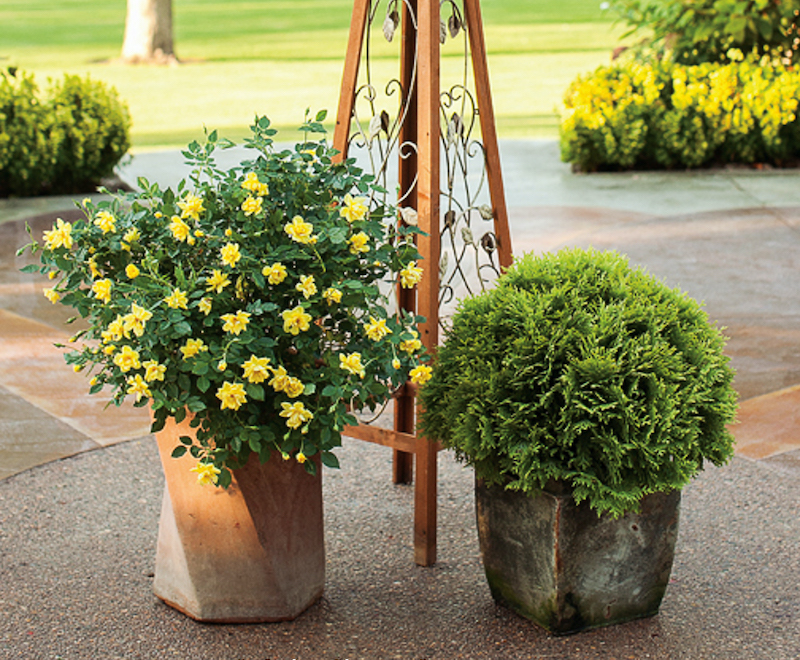
2. Dwarf Spruce
Spruce trees come in all sizes, and the dwarf type is well suited to planters. This tree can add year-round greenery to an outdoor entertaining area or porch, and it can even fill in as a living Christmas tree. Spruce is a classic pine tree, and each branch is covered with individual stiff, pointy, blue-green needles. Dwarf Spruce trees will reach 6 to 8 feet tall. Spruce trees naturally maintain a good shape and do not need much pruning, but you can trim the tree to help keep it at a more manageable size.
Acclimated trees grown in the ground rarely need assistance with water, but trees in planters will need water regularly during the growing season. Frequent water sustains the tree, but this will leach nutrients from the soil. Routinely feed the tree using a balanced fertilizer to provide the nutrition necessary to thrive.
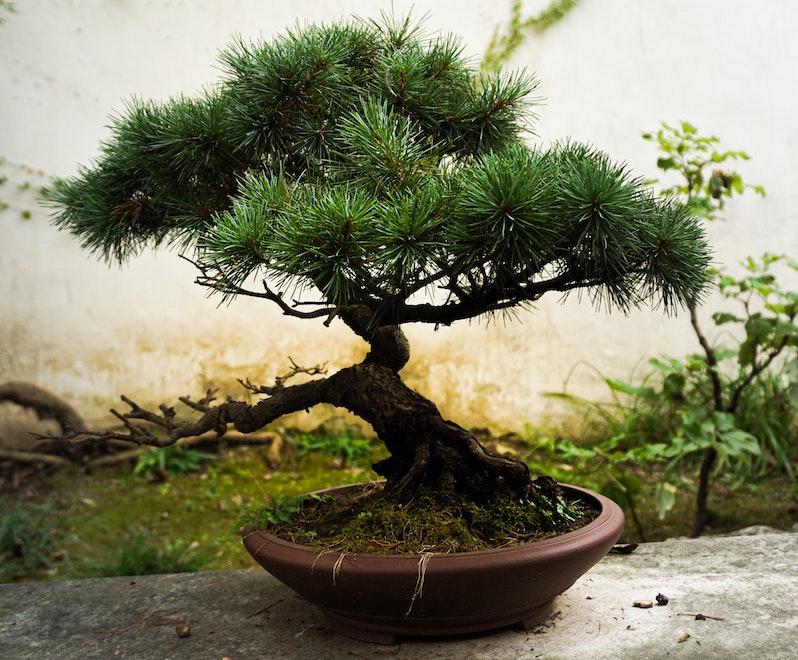
3. False Cypress
The soft, feathery foliage of the Cypress tree stays in place year-round, making a potted Cypress tree an excellent option for a space in need of some color and liveliness. Use potted trees to create a natural privacy screen or wind block or just to enjoy the greenery. As with all trees, pay attention to the height and width when mature. Smaller varieties can continue to be part of your plant styling for many years, but larger trees may need to be relocated to a spot in the yard at a certain point. This tree is low maintenance, so it thrives with very little care. False cypress trees in planters prefer a sunny spot and need water before the soil completely dries out.
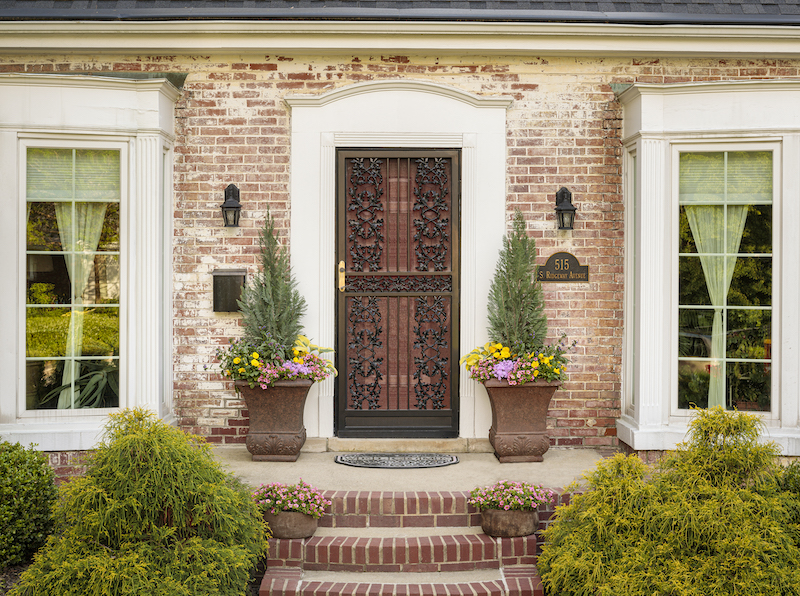
4. Buckthorn
The upright, narrow growth habit of Buckthorn makes this understory shrub a versatile plant, particularly when grown in a container. Fine stems have thin, textured foliage that gives this tree a feathery look. Buckthorn has an architectural appearance, and it can be used as an accent or specimen planting. It naturally maintains a narrow width, making it a great option to frame a door or entryway. Buckthorn grows 5 to 7 feet tall, so it can be used to fill in a large empty area or to provide privacy, especially if used with other potted trees.
This deciduous plant is rather adaptable, but it craves partial to full sun and has average water needs. It requires little pruning, but give Buckthorn a trim to maintain the shape or keep the plant a more desirable size.

5. Dwarf Citrus Trees
From lemons to limes, oranges, and tangerines, citrus trees make striking and functional container plants. The brightly-colored fruit adds color, while the stately trees and greenery bring warmth to an area. Introducing a fruit-bearing tree to your space means you can enjoy fresh citrus when the fruit is ripe. Consider the size of a mature tree when selecting a variety. Dwarf varieties are usually better suited to containers and can be brought indoors during the winter when grown in colder climates. Citrus trees require full sun and have medium water needs.
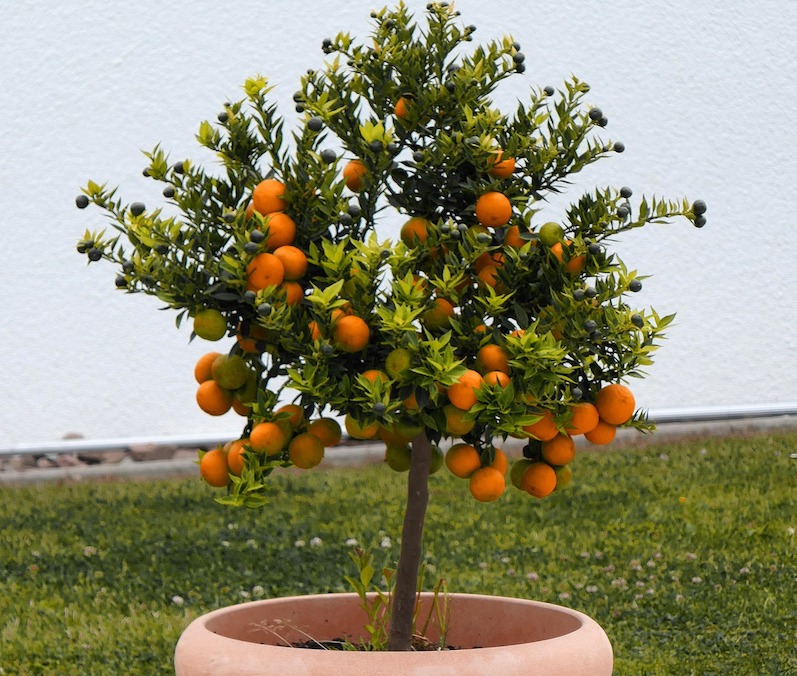
6. Japanese Maples
The delicate foliage of the Japanese Maple is radiant and provides visual interest year-round. Established Japanese Maple trees can be drought-tolerant, but routine water, especially during a dry spell, will help the tree thrive. Place mulch around the base to retain moisture and keep the roots damp. Pruning is unnecessary, but the tree can be trimmed to create a more stylized appearance and fit the desired look. Thinning branches will create an airy look or remove lower limbs to create a much more dense canopy. Unlike other maples, Japanese Maple should be pruned during the summer months when the sap will not seep from cuts.
Small and dwarf varieties of Japanese Maple are best for containers, but this plant will limit its growth to the size of the container, so once the roots have maxed out, the upper portion of the plant will not get any larger. This tree will do best in a sheltered area near a wall or railing that can block strung gusts of wind.
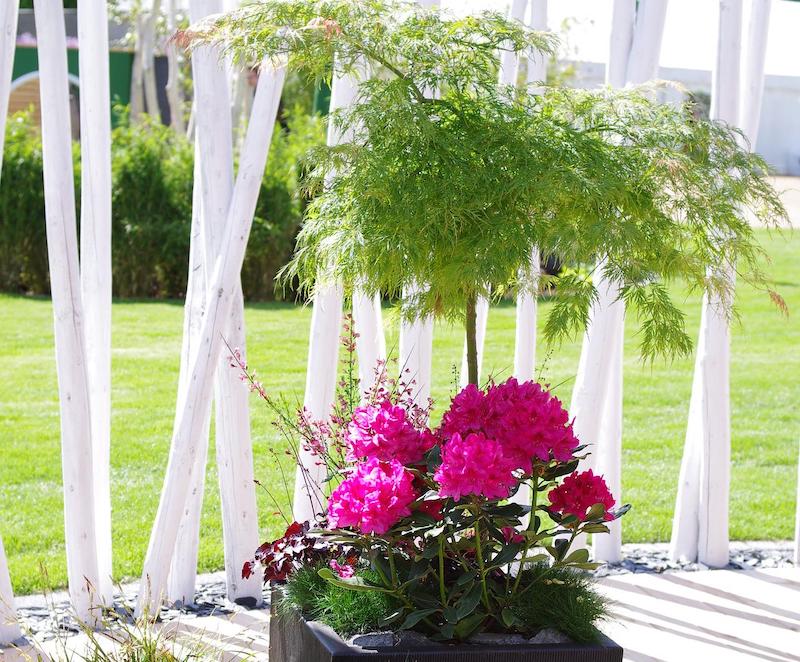
7. Olive Trees
Give a terrace a Mediterranean flair with an Olive tree. This tree has a naturally shallow root system, making it a good fit for a planter. Place the container in a sunny spot and water when the soil is dry. Olive trees will need protection during the winter when grown in cold regions. Growing olives can be exciting if you want to pick your own fruit, but if you want the look without the possibility of an oily mess, opt for a fruitless variety. Routine pruning will keep the tree compact and ideally suited for a container.
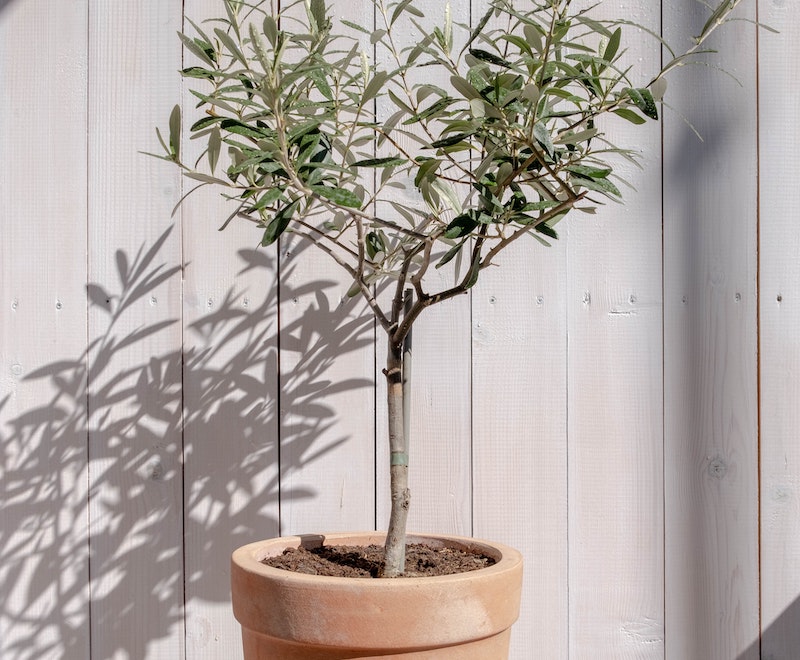
8. Palo Verde
The Palo Verde tree is native to Arizona and southern California deserts, and what sets this tree apart is its green trunk and branches. The bark of this tree is filled with chlorophyll, which helps the tree convert sunlight into food and gives it a very distinctive look. Starting in the spring, the Palo Verde blooms and will be adorned with small yellow flowers. This tree prefers full sun and needs well-draining soil. The drought-tolerant Palo Verde tree can live as a perennial in USDA zones 8 through 11. Some varieties have thorns, so be aware when choosing a plant for your space.
9. Privet
Privet is a small tree or hedge-like plant that is adaptable and easy to maintain. The dense, glossy foliage creates a wall of greenery, making this a great plant to separate different outdoor areas or provide privacy. Feature several Privet trees in planters to create an extended wall of foliage. When grown in a container, the privet needs full or partial sunlight and will require water when the top several inches of the soil dry out. Some Privet varieties bloom and feature small, tubular flowers on panicles in the summer that give way to clusters of black-colored berries.
This tree responds well to pruning, and you can let it maintain a natural look or trim it into a desired size or shape. Flowers form on new growth, so prune Privet as soon as the flowers die back and before new growth emerges.
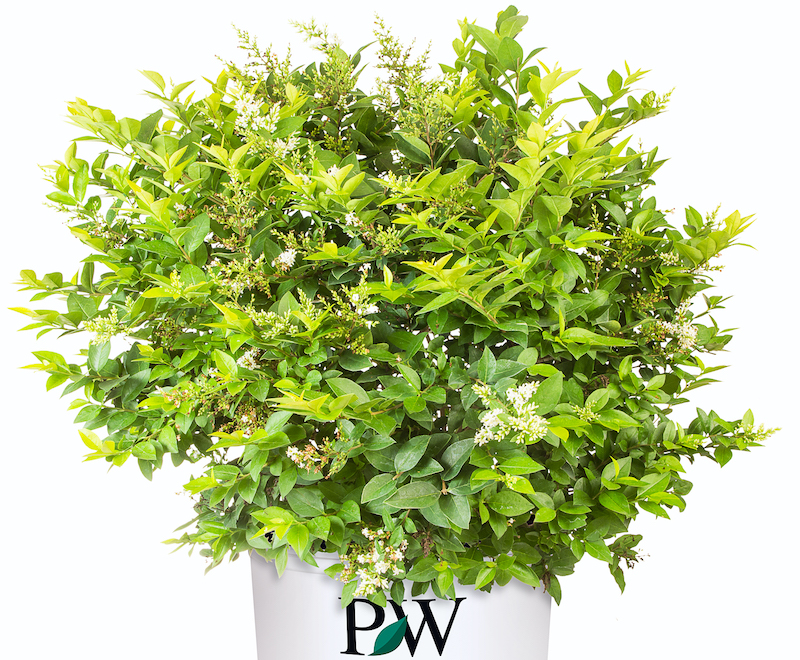
10. Sweet Bay
Sweet Bay is a compact and tidy tree that makes an excellent accent when grown in a large container. This tree can handle full sun or part shade, making it a versatile team player in an outdoor space. The leathery leaves can be harvested when mature and dried to season food. Sweet Bay blooms during the spring and summer and features tiny white blossoms. Routinely trim the tree back to maintain its form, or go for a more involved trim and create a topiary.

 |
Author Alison Cotsonas - Published 07-01-2022 |
